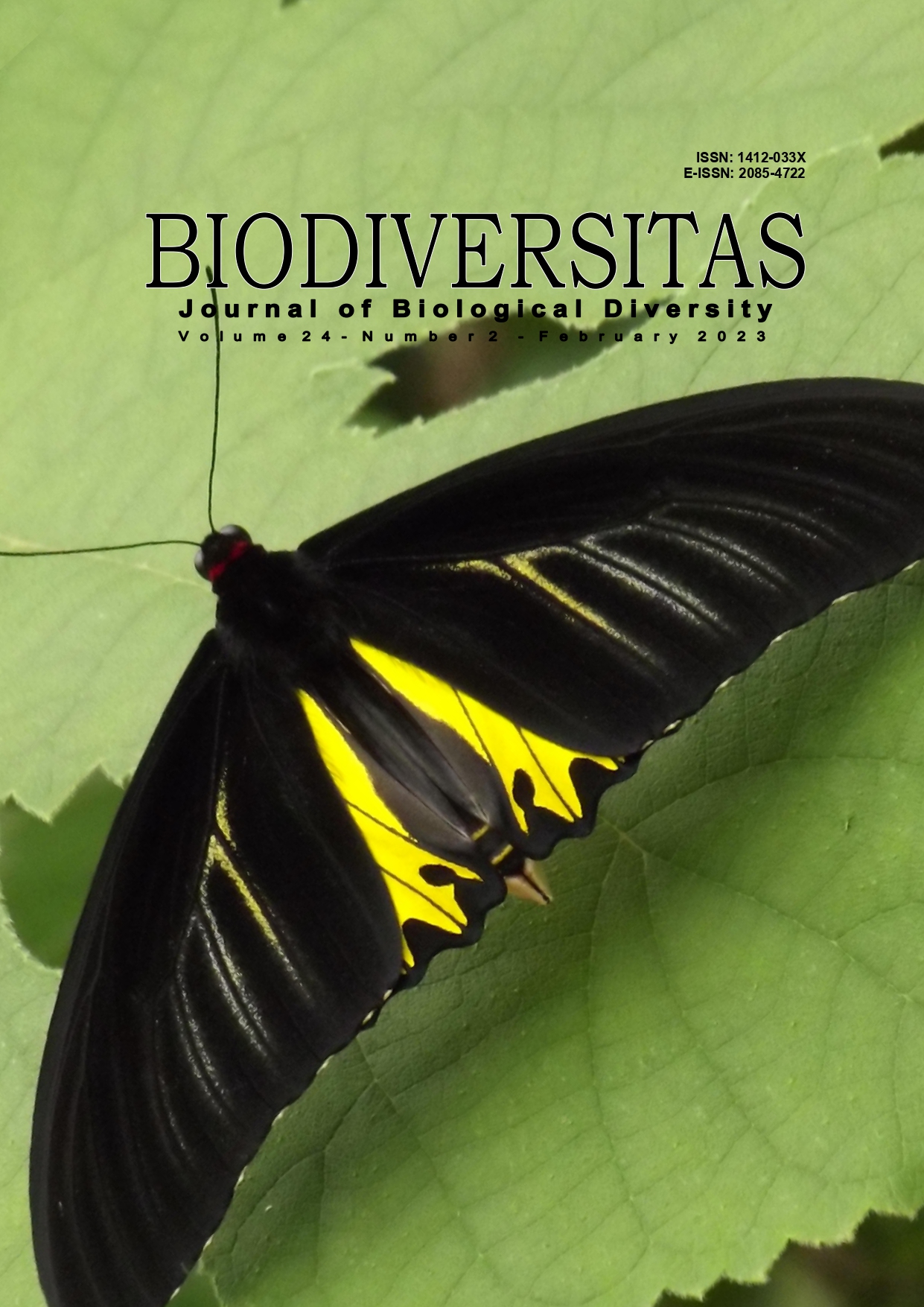Ecological index and economic potential of mollusks (Gastropods and Bivalves) in Ayah Mangrove Forest, Kebumen District, Indonesia
##plugins.themes.bootstrap3.article.main##
Abstract
Abstract. Dewi MAK, Aurina DM, Faturrahman AD, Fatikha LA, Rachmalia F, Ainaya FA, Kinanthi A, Rohman CM, Fadzilah FPA, Pramudita DA, Ramadhan MF, Mahajoeno E, Nugroho GD, Sujarta P, Dadiono MS, Yap CK, Rahim KABA, Setyawan AD. 2023. Ecological index and economic potential of mollusks (Gastropods and Bivalves) in Ayah Mangrove Forest, Kebumen District, Indonesia. Biodiversitas 24: 1231-1241. Mollusks are a group of triploblastic coelomates with soft bodies that live in various ecosystems, one of which is mangroves. This research was conducted with the aim of knowing the ecological index and economic potential in the mangrove forest of Ayah Village, Kebumen District, Central Java, Indonesia. First, the sampling method for each location using a transect plot measuring 10 x 10 m² was made. Mollusk species in each plot that had been obtained were then counted, collected, and recorded. Furthermore, abiotic variables such as water salinity, soil and water pH, and air, water and soil temperature, were measured. Then, the individuals and mollusk species that have been collected are calculated using ecological indices, such as the Shannon-Wiener biodiversity index, species density, Margalef species richness index, Evenness index, and Simpson dominance index. Meanwhile, the economic potential of the mollusk was searched using references from scientific journals and books. Finally, all data obtained were analyzed descriptively with supporting figures and tables. The results obtained 23 identified species of mollusk, i.e.: Gastropods (18 species) and Bivalves (5 species). The total density of mollusk obtained was 3.49 ind/m2, the species diversity index was 2.22 (moderate), the species evenness index was 0.71 (relatively even), the species dominant index was 0.16 (low), the species richness index was 2.71 (low). The environmental factors are as follow: temperature of air (30-30.3°C), water (28-29°C), soil/sediment (24-30°C), water pH 7.5-7.7, soil pH 7 and salinity 1-5 ppt. Of the total of 23 mollusks, 18 species could be consumed, i.e.: A. granosa, B. spirata, C. angulifera, C. aurisfelis, C. oualaniensis, E. aurisjudae, F. ater, L. scabra, N. lineata, N, violacea, N. dubia, P. viridis, P. cingulata, P. expansa, P. canaliculata, P. maculata, S. cucullata, and T. telescopium. The seven species of mollusks can be used as accessories, i.e.: B. spirata, N. lineata, P. cingulata, P. exilis, P. expansa, P. canaliculata, and P. maculata. Meanwhile, the mollusks used as decorations are as many as eleven, i.e.: A. granosa, B. spirata, C. corona, C. oualaniensis, N. margaritiferus, N. dubia, P. expansa, P. canaliculata, P. maculata, S. cucullata and V. turrita.

